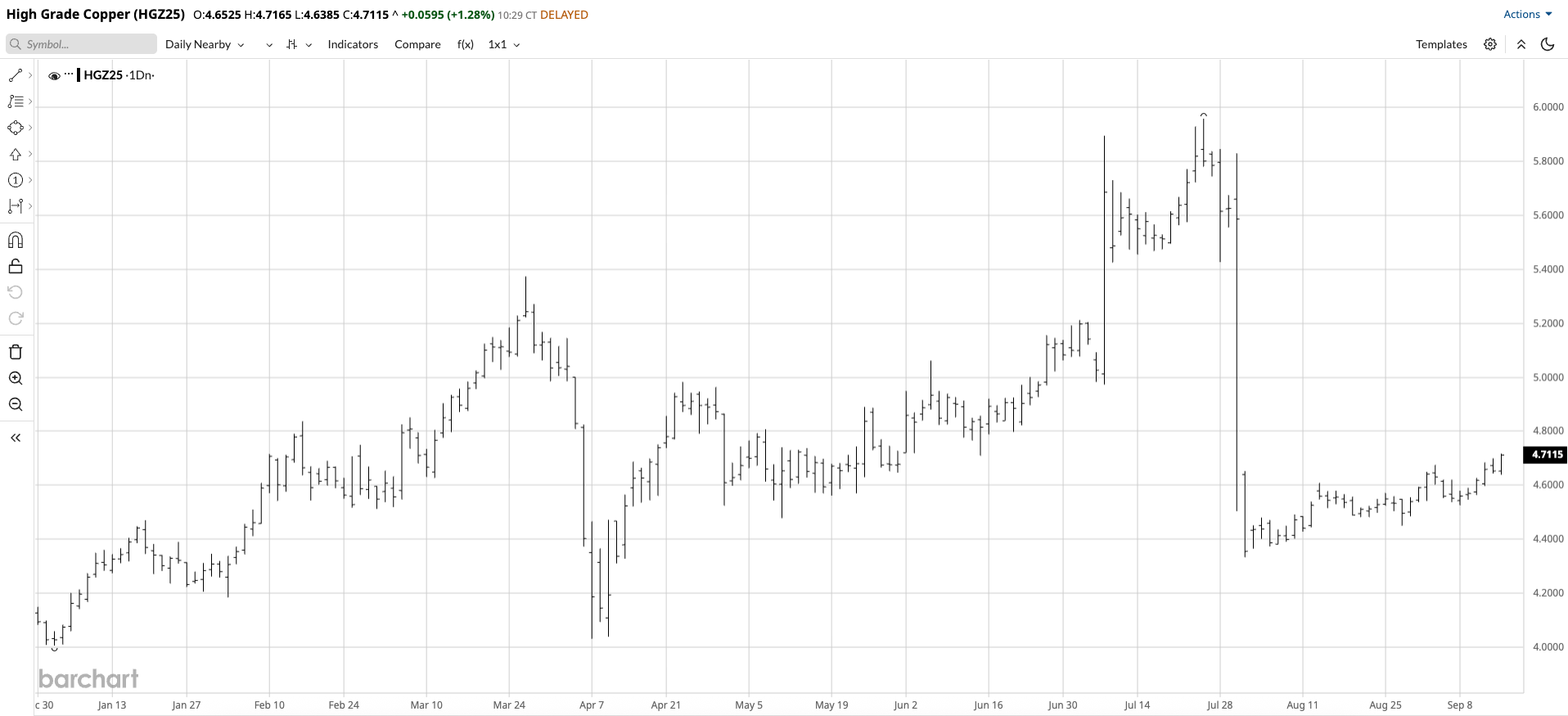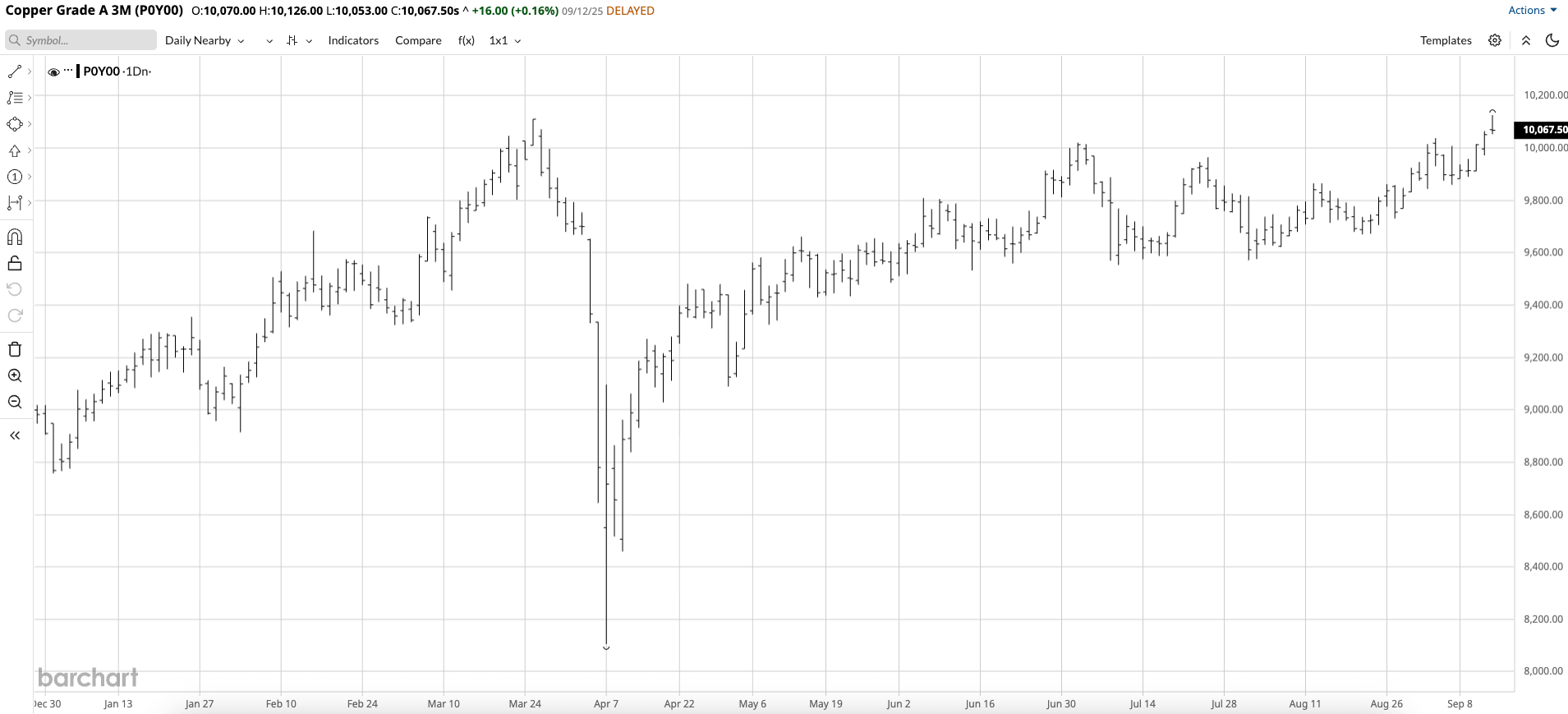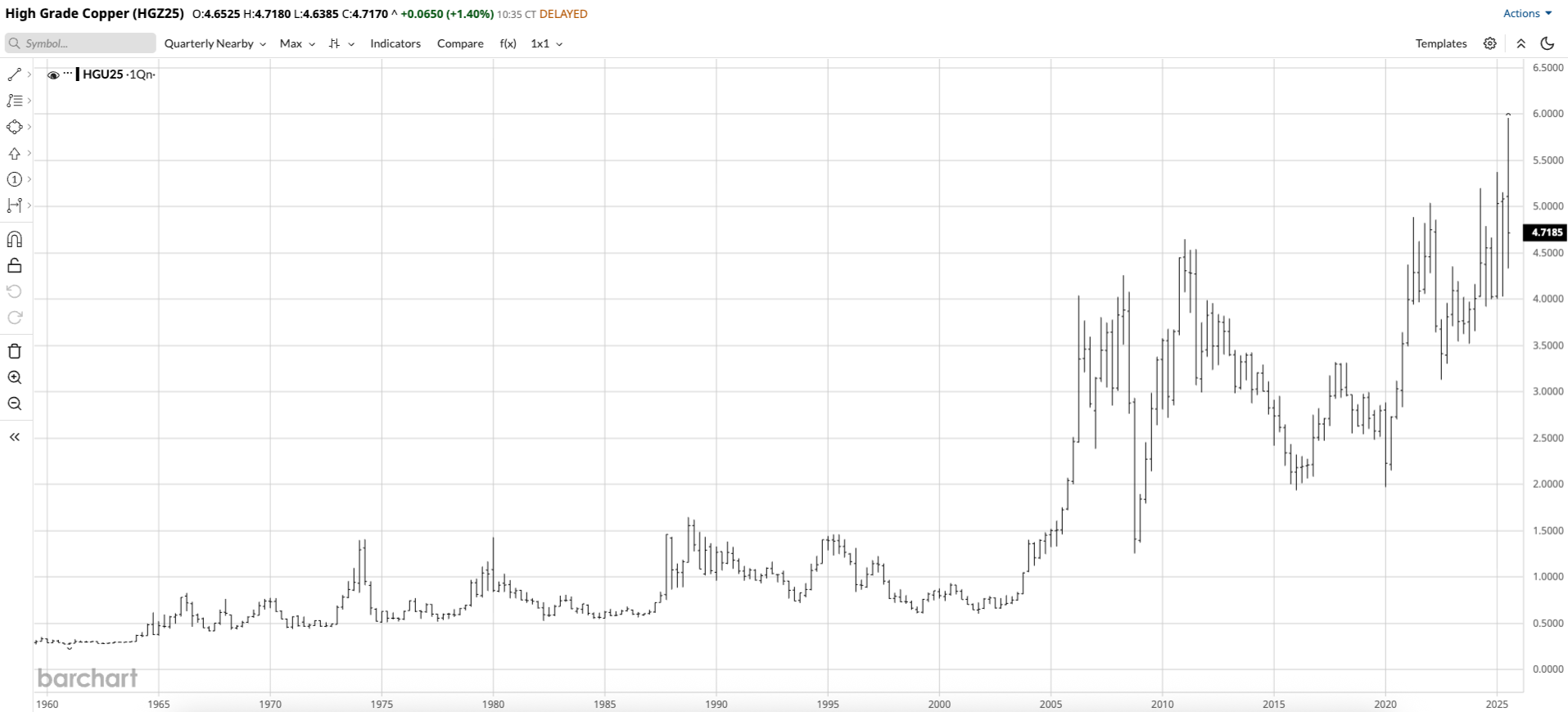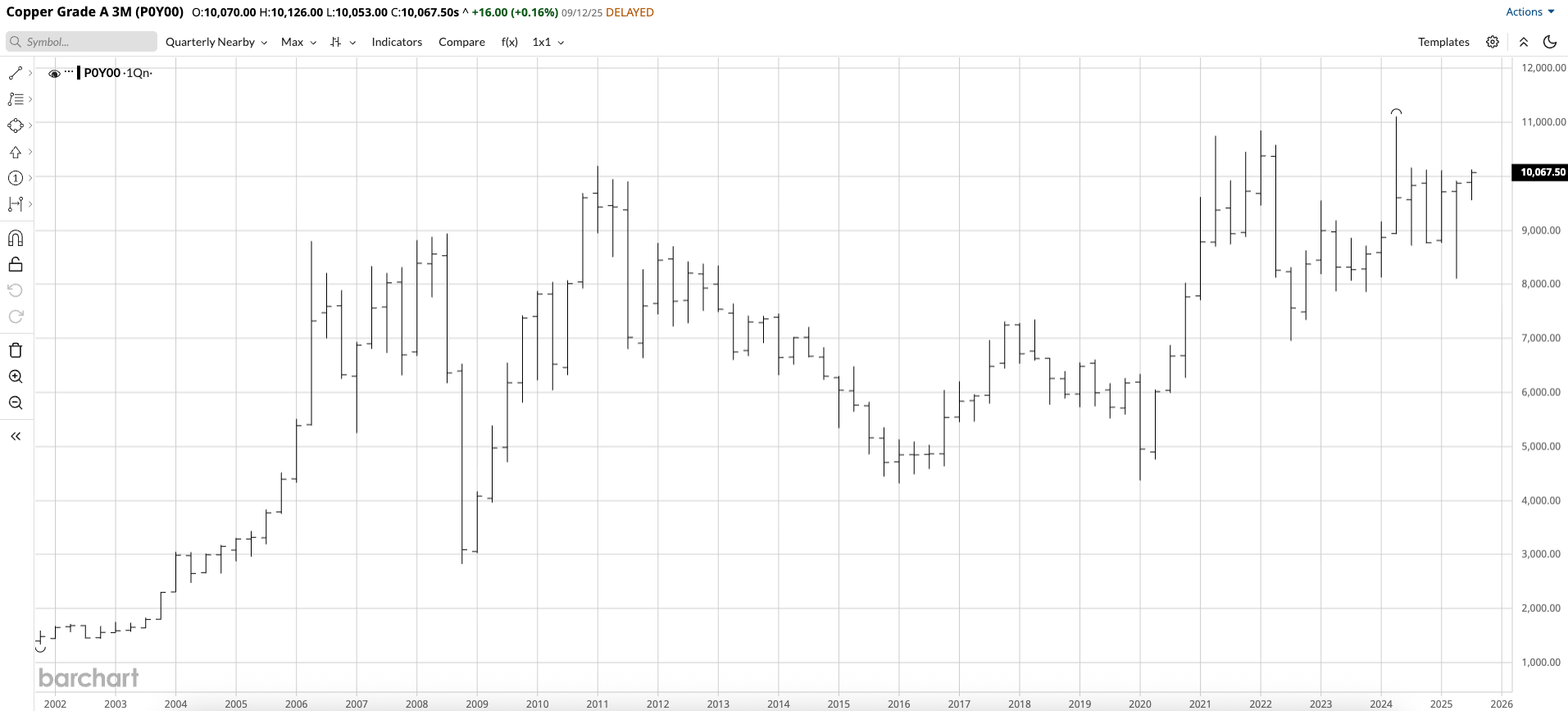Will Copper Reach $5 by the End of 2025?

Copper volatility in the futures market was extreme in 2025, with the price reaching new record highs in March and July and a pair of implosive moves to lows in April and late July. U.S. tariffs have only exacerbated the price variance of copper.
In a July 31, 2025, Barchart article, I highlighted the divergence between COMEX copper futures and LME copper forwards. I concluded with the following:
If the price action over the past decade and a half is a clue, copper futures should hold above the $4 level after the recent dramatic correction. The spread between LME copper forwards and the COMEX futures substantially narrowed because of the plunge in the futures prices. I remain bullish on copper prices because of the red metal's compelling fundamentals. Time will tell if $4 holds during the current selloff that has turned the futures market into a falling copper knife.
On July 31, nearly COMEX copper futures were at the $4.4255 per pound level, with the three-month LME copper forwards at $9,793 per metric ton. On September 15, 2025, the futures and forwards were higher as copper prices had recovered from the July lows.
COMEX futures recover
After reaching the July 24 record high of $5.9585, the continuous COMEX copper futures contract plunged 27.3% to a July 31 low of $4.3325 per pound.

The daily year-to-date chart of the continuous COMEX futures highlights that copper prices have recovered and have made higher lows and higher highs since the low from July 31. Prices were above the $4.55 level on September 4.
LME forwards move higher
Three-month copper forwards on the London Metals Exchange had a far less volatile year than the COMEX futures in 2025 for the reasons highlighted in the July 31 Barchart article. Tariffs have caused substantial and unprecedented price differentials between the COMEX futures and the LME forwards.

While the COMEX futures reached two new record high prices in 2025, the LME three-month forwards remained below the 2024 record peak of $11,104.50 per metric ton. The LME forwards fell to a low of $8,105 per ton on April 7 when U.S. President Trump announced his tariff plans. As the chart shows, LME copper forwards have made higher lows and higher highs since the low from early April, reaching over $10,000 per ton on September 12.
The bottom line is that both copper futures and forwards have been moving higher since July 31. The late July decline in the futures caused the differential to narrow and return toward more normal levels.
The fundamentals remain bullish
Copper’s supply and demand fundamentals continue to suggest that higher prices are on the horizon. The following factors support the nonferrous red metal:
- Copper could experience a 30% supply shortfall by 2035, with the demand rising until 2025. Mine supplies are likely to decline after the late 2020s.
- China is the world’s leading copper consumer. As the Chinese economy grows, copper demand is likely to increase.
- Copper is a critical ingredient in green energy initiatives, further expanding the demand side beyond infrastructure building and other applications.
- New production in the Democratic Republic of Congo faces significant political and logistical roadblocks.
- The supply-demand equation favors higher copper prices.
Even the most aggressive bull markets rarely move in straight lines, and copper is no exception.

The quarterly COMEX futures chart highlights copper’s bullish pattern of higher lows and higher highs since the early part of this century.

The quarterly LME three-month forwards chart highlights the same bullish pattern of higher lows and higher highs since the early part of this century.
The bottom line is that while copper prices have been highly volatile, the path of least resistance remains higher in September 2025.
Tariffs are trade barriers
Tariffs interfere with the flow of global commodities by creating trade barriers that distort regional prices. The most recent glaring example has been the differential between U.S. COMEX copper futures and European LME copper forward prices. While the differential between the futures and forward has returned to more normal levels, there are no guarantees that future tariffs or other trade barriers could distort the differential over the coming weeks and months. Therefore, expect lots of volatility in the global copper market. Meanwhile, the supply and demand fundamentals support buying the red metal on price weakness, leaving plenty of room to add at lower levels.
CPER has moved higher from the July 31 low
While the most direct routes for a risk position in copper are the COMEX futures and LME forwards, the U.S. Copper ETF (CPER) product tracks the red metal’s price. CPER owns a portfolio of actively traded COMEX copper futures; therefore, it is highly sensitive to the futures instead of the forwards.
At $29.02 per share, CPER had $187.33 million in assets under management. CPER trades an average of over 235,000 shares daily and charges a 0.88% management fee.

The daily chart highlights that CPER tracks the volatile COMEX futures, as the ETF dropped 35.5% from $36.69 on July 23 to a low of $27.08 on July 31. Since the July 31 low, CPER has been trending higher with the price of COMEX copper futures.
Time will tell if copper futures can reach the $5 per pound level again before the end of 2025. Meanwhile, the supply-demand fundamentals continue to support higher prices throughout the rest of this year and in 2026 and beyond.
On the date of publication, Andrew Hecht did not have (either directly or indirectly) positions in any of the securities mentioned in this article. All information and data in this article is solely for informational purposes. For more information please view the Barchart Disclosure Policy here.